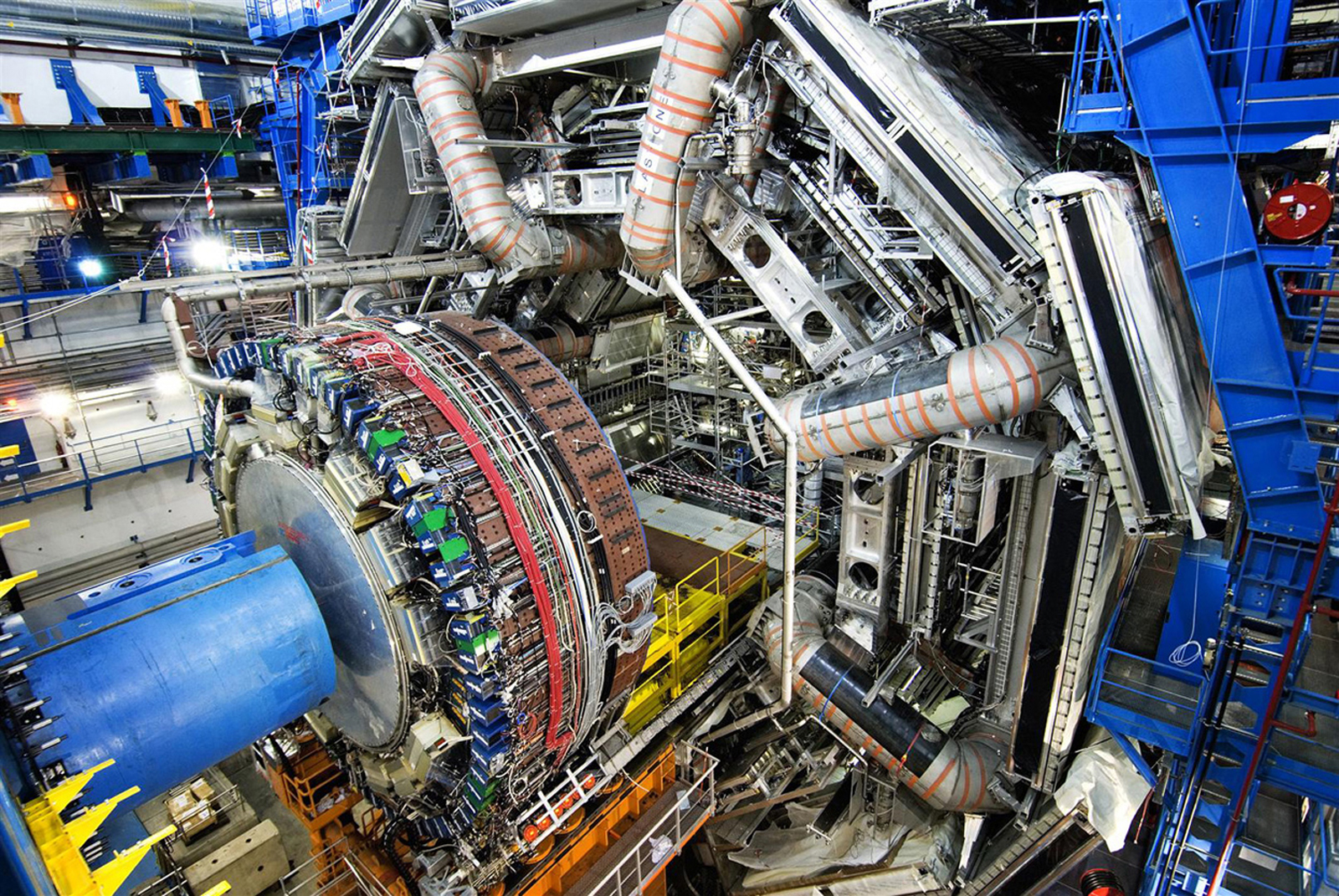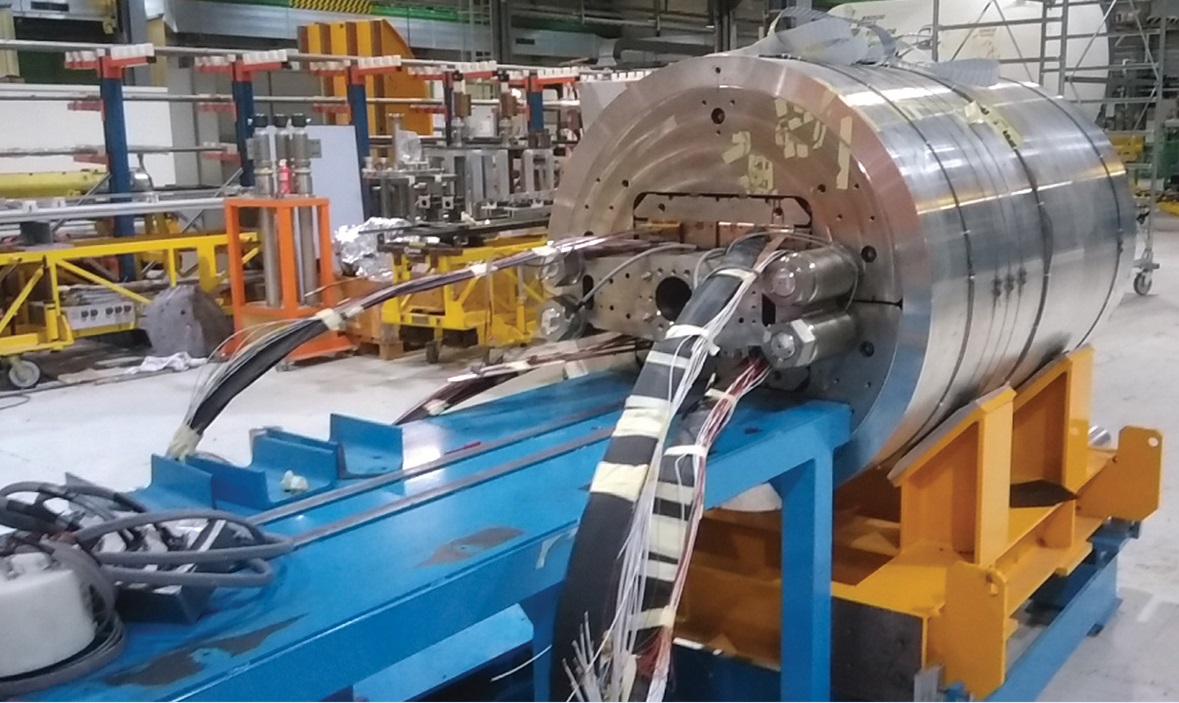Taking a closer look at LHC
|
CERN’s future is essentially the LHC:
|
|
Superconducting Proton Linac (SPL):
|
|
Other challenges:
The large-bore Nb3Sn dipole FRESCA2 at CERN, built in collaboration with CEA-Saclay, reached a record dipole field of 14.6 T at 1.9 K in 2018 (Image: CERN) The following text is taken from CERN’S Main Objectives for the period 2021-2025 CERN’S Main Objectives for the period 2021-2025 Current scientific programme. The main objectives are: • A successful Run 3, enabling the full experimental exploitation of the LHC physics opportunities. Target integrated luminosities are: at least 160 fb-1 to ATLAS and CMS (which is equivalent to those delivered in Run 2) and 25-30 fb-1 to LHCb, both at a proton-proton centre-of mass energy of at least 13.6 TeV, and 6 nb-1 to ALICE in lead-lead collisions. • Completion of the HL-LHC project and the Phase-2 upgrades of ATLAS and CMS, for installation during Long Shutdown 3 (LS3). On the accelerator front, the main challenges come from the development and construction of the new Nb3Sn dipole and quadrupole magnets, the latter being crucial to achieve the luminosity targets of the HL-LHC. The detector upgrades of ATLAS and CMS are ambitious and present several challenges in terms of technology, schedule and cost. • CERN’s scientific diversity programme, undertaken principally at the injector complex and which serves a broad community of users. The injectors were significantly upgraded during Long Shutdown 2 (LS2) in the framework of the LHC Injectors Upgrade project and, over the course of Run 3, they will gradually ramp up to their target beam intensities, allowing exploitation of the enhanced physics potential by the experiments at HIE/ISOLDE, n_TOF, AD/ELENA, North-Area, as well as AWAKE and the test beam and irradiation facilities. • Activities at the Neutrino Platform, which plays a crucial role in supporting the European neutrino physics community involved in long-baseline accelerator projects in the United States and Japan and has been making crucial scientific and technological contributions in particular to the Long-Baseline Neutrino Facility (LBNF) and the DUNE experiment in the United States. Investments in the Neutrino Platform, including the recent undertaking to build the second cryostat for the DUNE detector, aim at both supporting the engagement of the European community involved in projects outside Europe and strengthening the relations and the reciprocity of collaboration with non-Member State partners. • Research in theoretical particle physics, which produces original ideas, opens new avenues of exploration, motivates experimental investigation and supports the experimental programme through essential knowledge and tools. CERN’s theory activities will continue to be supported, with the following main goals: produce advanced research in various domains (from formal theory to phenomenology, heavy ions, quantum gravity, cosmology, astroparticle physics, etc.); serve the international theoretical physics community, in particular by attracting hundreds of visitors annually; and support the activities of the Laboratory. |
Also see: The European Committee for Future Accelerators (ECFA)
|
AUTHORS Xabier Cid Vidal, PhD in experimental Particle Physics for Santiago University (USC). Research Fellow in experimental Particle Physics at CERN from January 2013 to Decembre 2015. He was until 2022 linked to the Department of Particle Physics of the USC as a "Juan de La Cierva", "Ramon y Cajal" fellow (Spanish Postdoctoral Senior Grants), and Associate Professor. Since 2023 is Senior Lecturer in that Department.(ORCID). Ramon Cid Manzano, until his retirement in 2020 was secondary school Physics Teacher at IES de SAR (Santiago - Spain), and part-time Lecturer (Profesor Asociado) in Faculty of Education at the University of Santiago (Spain). He has a Degree in Physics and a Degree in Chemistry, and he is PhD for Santiago University (USC) (ORCID). |
CERN CERN Experimental Physics Department CERN and the Environment |
LHC |
IMPORTANT NOTICE
For the bibliography used when writing this Section please go to the References Section
© Xabier Cid Vidal & Ramon Cid - rcid@lhc-closer.es | SANTIAGO (SPAIN) |




